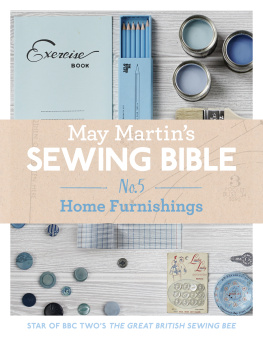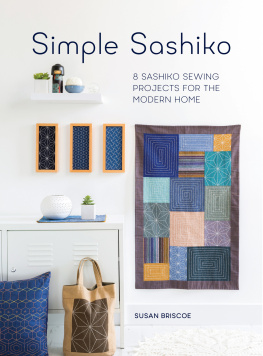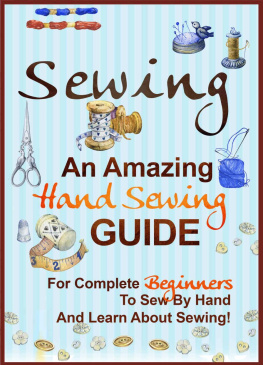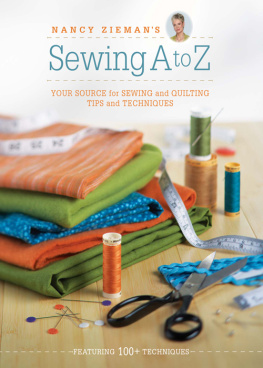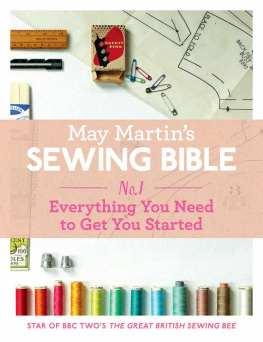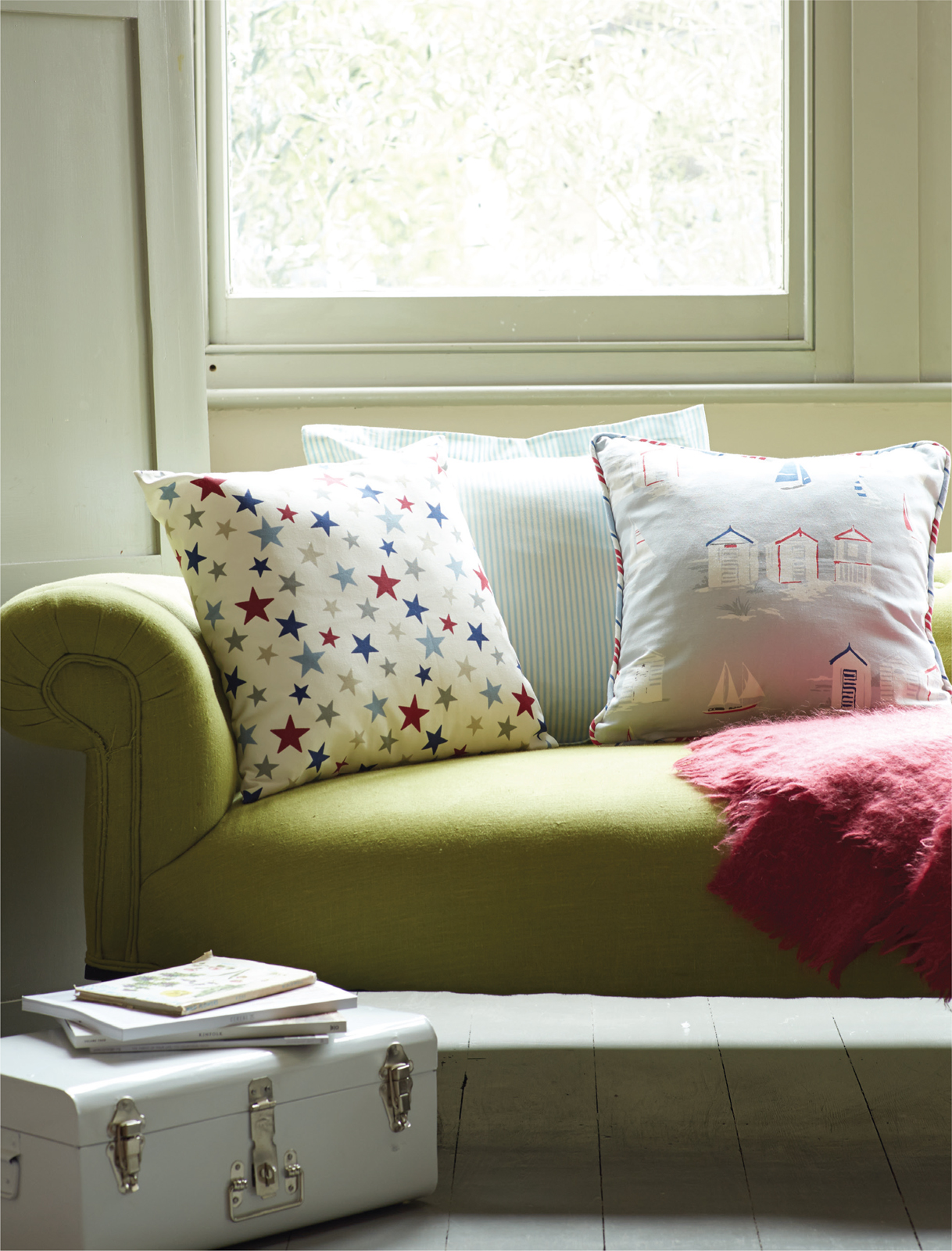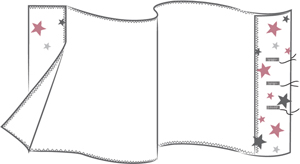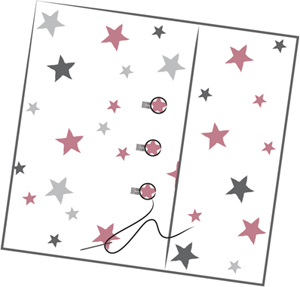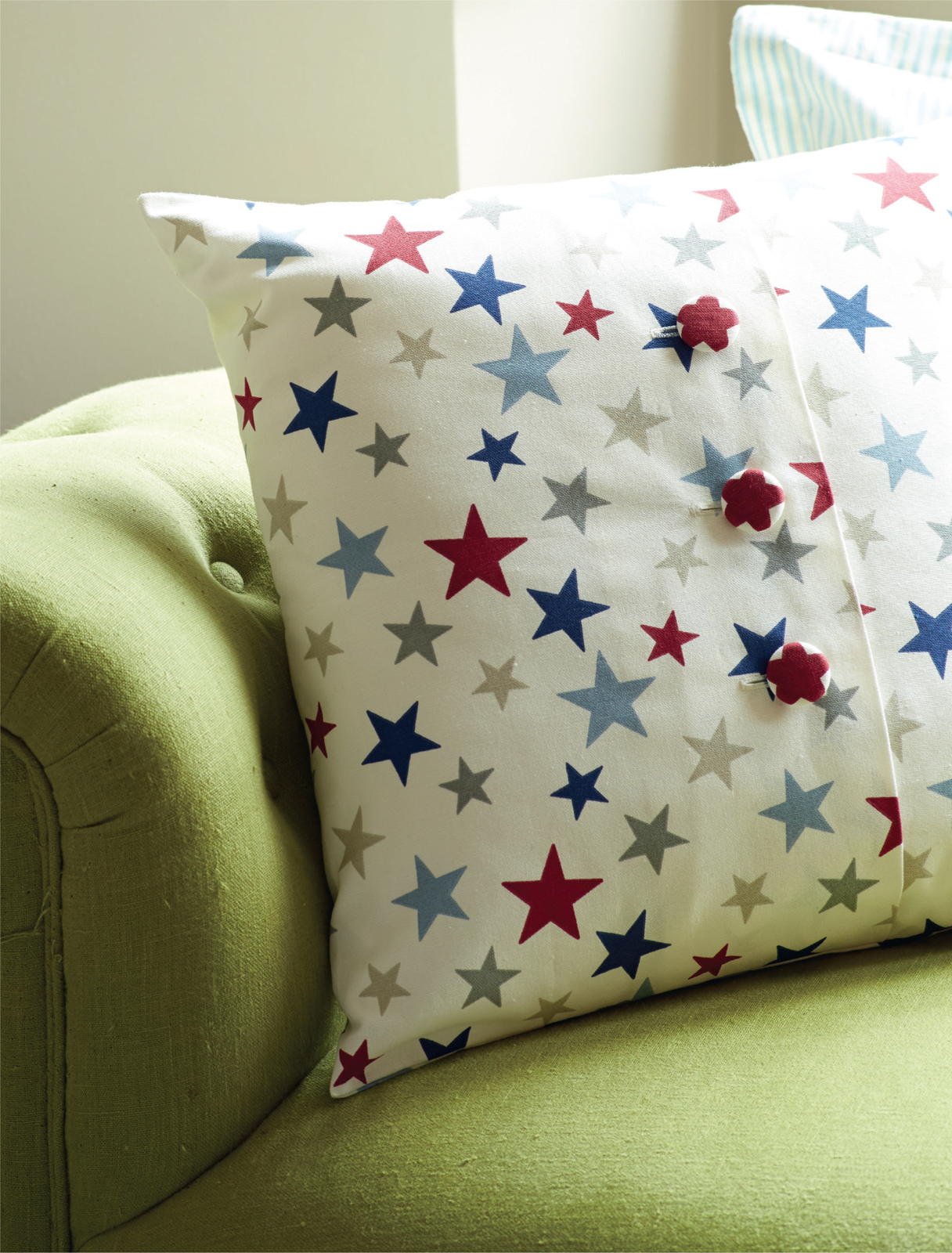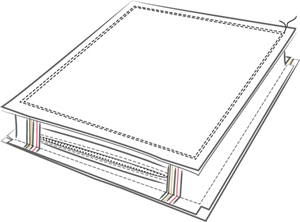Contents
No.1 CUSHIONS
Cushions are a fabulous addition to any scheme. Fun in a child's bedroom and sophisticated in a living room, they do not take a lot of fabric and they are a wonderful place to start when you are learning to sew. They can be simple or complex, plain or fancy!
This is the easiest type of cushion cover to make and a good way of starting your sewing journey! It is also a really economical use of fabric, as its just one strip with no extra bits and pieces to attach. You could use ties to fasten the cover if youd prefer not to make buttonholes.
Measuring Up
If you are making this to fit a different-sized cushion pad, youll need a rectangle of fabric twice the width of the pad plus 30cm (12in) the width of the pad plus 3cm (1in).
You will Need
Pad: 45cm (17in) square cushion pad
Fabric: 48 120cm (18 47in) furnishing fabric
Thread: All-purpose sewing thread
Accessories: Three 29mm (1in) (see the full eBook)
Assembly
Neaten all raw edges (see the full eBook). Turn over 12cm (4in) to the wrong side on each short end. On one short end, make three 32mm (1in) buttonholes (see the full eBook).
Fold the strip of fabric into three, with the right side of the fabric on the inside and the two short edges overlapping in the middle and the edge without the buttonholes on top (see ). The square central section should measure the width of the pad plus 3cm (1in).
Make sure all edges are parallel, then pin together the top and bottom edges.
Machine-stitch the edges of the cover together, taking 1.5cm (in) seam allowances.
Turn the cover right side out and press the seams, pushing out the corners with a chopstick or point turner. Cover the buttons (see the full eBook) and sew them on.
Cushion covers of this kind are made to cover box-shaped foam pads, such as you might find on a sofa, for instance, or to go on the seat of a wooden chair, as shown here. They are also really effective with a standard cushion pad popped in. I have put a 50cm (20in) square cushion pad inside my 35cm (13in) box cover see yes, it really does fill it up nicely!
Measuring Up
The sample here is 35cm (13in) square with a box strip 5cm (2in) deep, but you can follow the instructions below to make any size of box-shaped cushion. Simply measure the size of the pad across the top, down the sides and around the perimeter, adding a 1.5cm (in) seam allowance all round and allowing for extra seams in the back section of the strip in which the zip is inserted.
You will Need
Pad: 35cm (13in) foam pad or 50cm (20in) square cushion pad
Fabric: 80cm (31in) furnishing fabric, 137cm (54in) wide
Thread: All-purpose sewing thread
Machine foot: Adjustable zipper foot (see the full eBook)
Accessories: 3m (3yd) no. 3 piping cord 30cm (12in) zip
Cutting Out
Cut the following from the fabric: two 38cm (15in) squares for the front and back of the cover; two 5 30cm (2 12in) strips for the back section with the zip; one 8 118cm (3 46in) strip that will form the remainder of the box. (You may need to join two or more strips of fabric together for this.)
Assembly
Neaten the edges of all the cushion cover pieces with zigzag stitching or overlocking, then follow the instructions for the Piped Cushion Cover (see the full eBook) for making and attaching piping, attaching piping to both square panels for this cover.
Next, join together the two narrower strips of fabric for the back edge of the cushion, inserting a zip in the centre of the two long edges following the instructions in the full eBook.
Pin one short end of this zipped section to a short end of the long strip, right sides together, then machine-stitch in place. Press the seam open.
To attach the long strip to one of the square pieces of fabric, start with the zipped section, positioning it (right sides together with the square piece) so that the zip sits in the middle of the back of the cushion.
Carefully pin your strip to one of the piped square pieces, sandwiching the piping in between the two layers. Continue in this way until you reach the other side of the zipped section.
Pin and join this short seam so that the square piece is completely enclosed.
Now machine the strip to the piped square, following the row of machining that is holding the piping in position. Snip the box strip at each corner to make it easier to position around the edge of the piped square, taking care not to cut into the stitching.
Open the zip (so that you can turn the cover through), then pin the second piped square of fabric to the other side of the box strip in the same way, positioning them right sides together and lining up the corners on the top and bottom of the strip. Machine together.
Making a new set of curtains is the perfect way to refurbish a room at a fraction of the cost of having them made up professionally and with the satisfaction of knowing that yours will be truly unique. There is some maths involved, but the wonderful range of fabrics now available gives you endless scope.
You will Need

